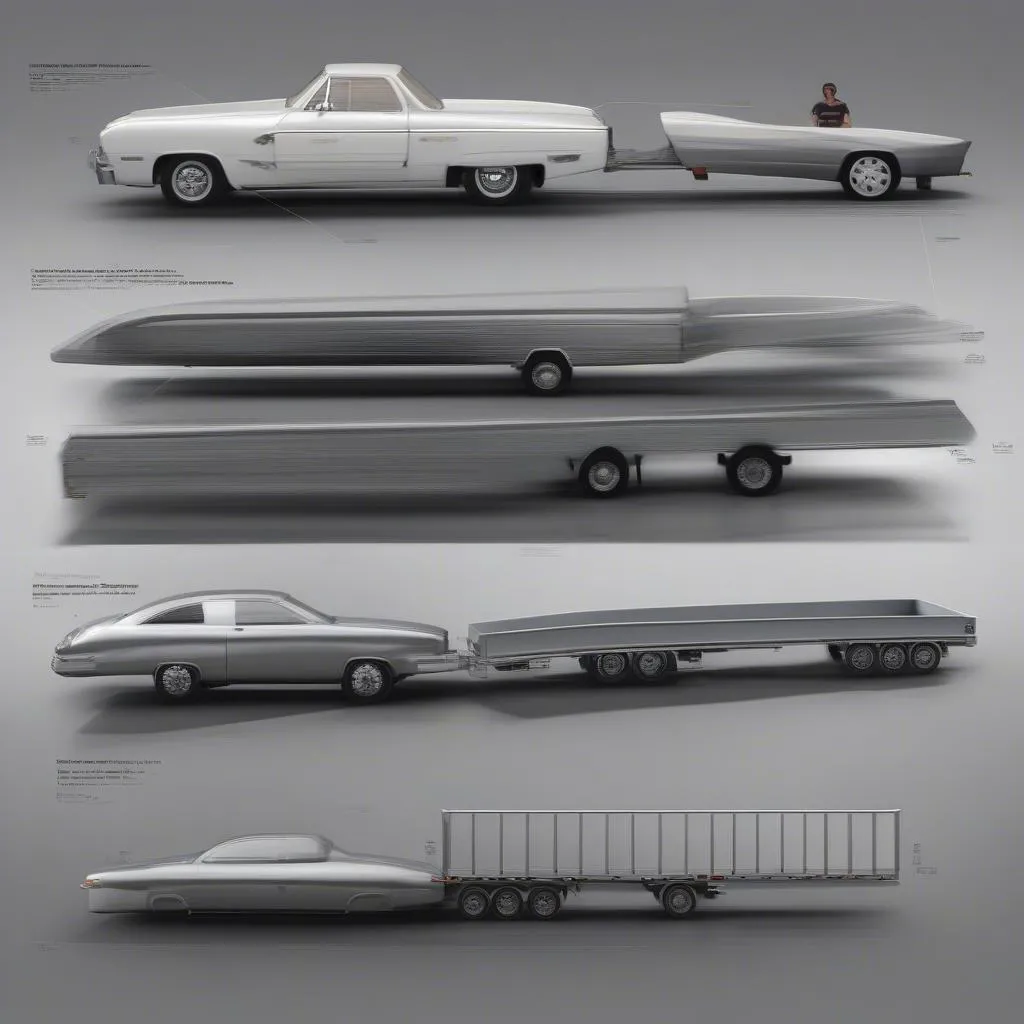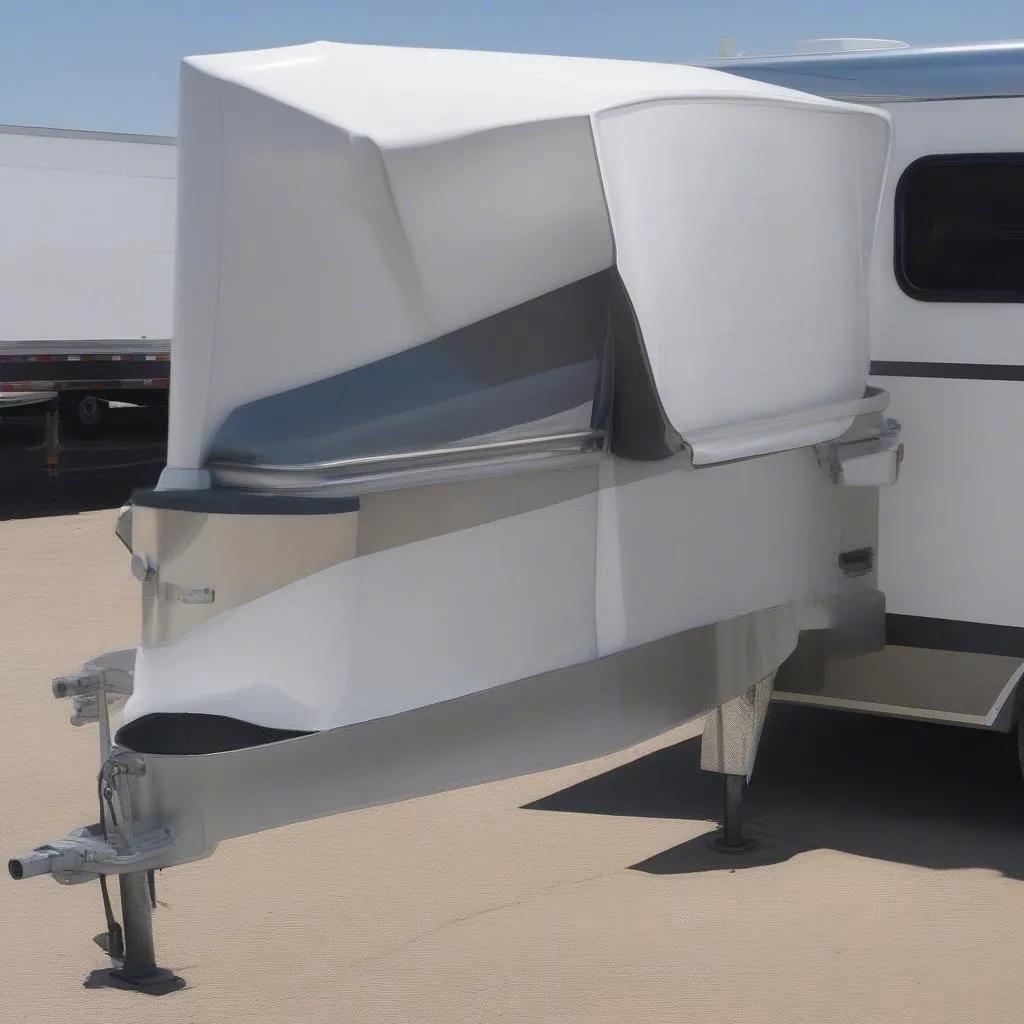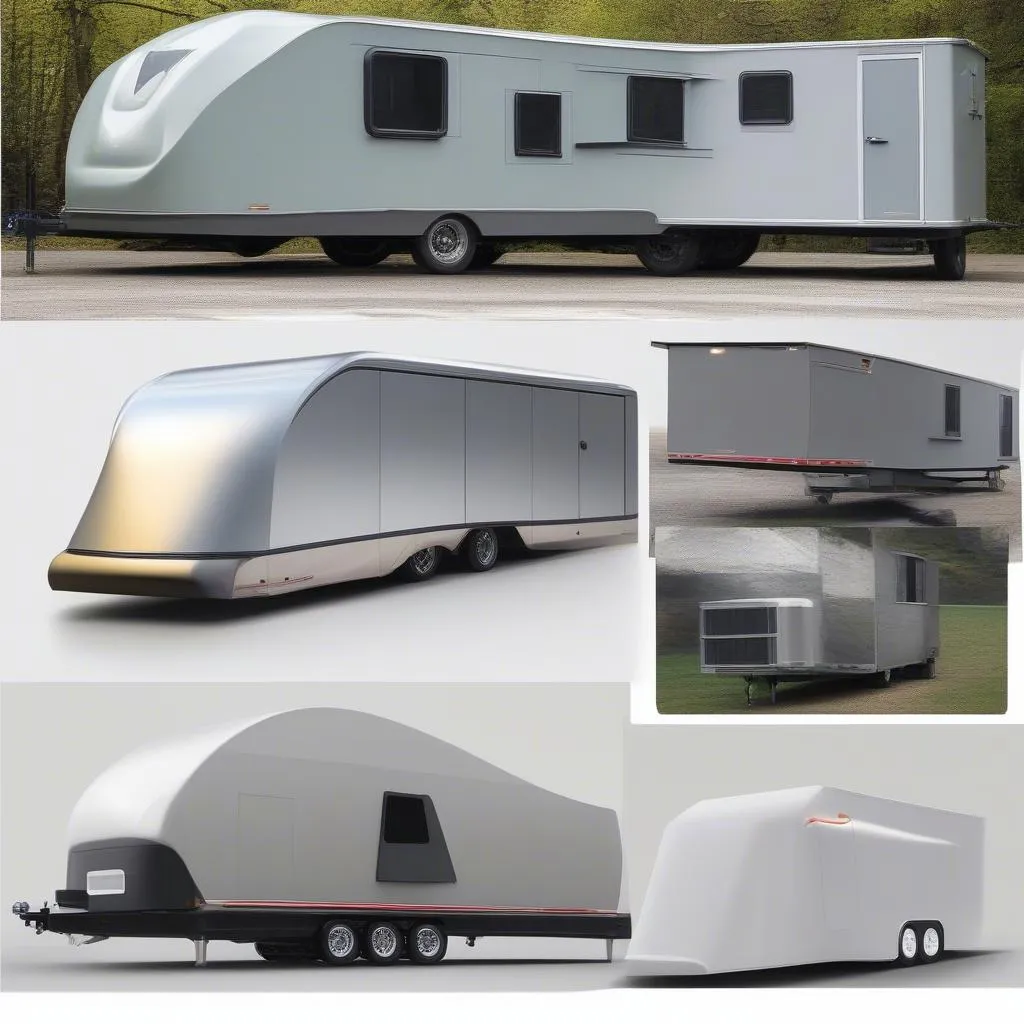Have you ever driven down a highway and seen a car pulling a trailer that seems to be wobbling uncontrollably? Or maybe you’ve felt your own car pulling to one side when towing a trailer? These are signs that the aerodynamics of your car and trailer setup are not working properly.
Why Car Trailer Aerodynamics Matter
Good Car Trailer Aerodynamics are crucial for safety, efficiency, and comfort when towing. It can make all the difference in:
Safety:
- Stability: Proper aerodynamics helps to prevent the trailer from swaying or bouncing, which can lead to loss of control and accidents.
- Braking: A streamlined setup reduces wind resistance, allowing for better braking performance and shorter stopping distances.
- Reduced wind noise: A less turbulent airflow minimizes wind noise, making your journey more pleasant.
Efficiency:
- Fuel economy: A streamlined design reduces drag, leading to better fuel efficiency and saving money.
- Reduced wear and tear: Less drag also puts less stress on the vehicle and trailer, extending their lifespan.
Comfort:
- Reduced driver fatigue: A smooth ride with less wind noise and vibration reduces driver fatigue, making longer journeys more enjoyable.
Understanding the Science of Car Trailer Aerodynamics
Think of it like this: When a car or trailer moves through the air, it creates resistance, much like a boat pushing through water. This resistance, called “drag,” is what makes it harder to move and slows down the vehicle.
Key Factors Affecting Aerodynamics
-
Shape: The shape of the car and trailer, including the angle of the front and rear, the shape of the sides, and the overall length, plays a huge role in how the air flows around them.
-
Surface Area: The larger the surface area exposed to the air, the more drag is generated. This is why a tall, boxy trailer will experience more drag than a low, streamlined trailer.
-
Wind Speed: The faster the vehicle travels, the stronger the wind resistance.
 Car Trailer Shapes and Drag
Car Trailer Shapes and Drag
Common Causes of Poor Car Trailer Aerodynamics
Here are some common reasons why you might experience poor car trailer aerodynamics:
1. Incorrect Trailer Setup
- Trailer hitch height: The height of the trailer hitch on your car should be level with the trailer’s axle. If the hitch is too high or too low, it can create a lot of drag and make the trailer unstable.
- Trailer weight distribution: Make sure the weight is balanced evenly in your trailer.
- Trailer tires: Underinflated tires can also contribute to instability and poor aerodynamics.
- Trailer accessories: Things like cargo boxes, bicycle racks, or even spare tires can add to the drag and affect the overall aerodynamics.
2. Lack of Aerodynamic Features
- Absence of a wind deflector: A wind deflector, also known as a “tailgate air dam” or “wind dam,” can significantly reduce drag by deflecting air around the trailer.
- Lack of side skirts: Adding side skirts to the trailer can smooth the airflow around the sides, reducing turbulence and improving fuel efficiency.
How to Improve Car Trailer Aerodynamics
There are several simple steps you can take to improve the aerodynamics of your car and trailer:
1. Invest in Aerodynamic Accessories
- Wind deflector: Install a wind deflector on the back of your trailer. These are relatively inexpensive and can make a big difference in reducing drag.
 Wind Deflector for Trailer
Wind Deflector for Trailer
- Side skirts: Adding side skirts to your trailer can also improve the aerodynamics, but they can be more expensive than a wind deflector.
2. Adjust Your Towing Technique
-
Maintain a safe speed: Driving at high speeds increases wind resistance, so try to maintain a steady and safe speed, especially when towing a trailer.
-
Avoid sudden braking and acceleration: Sudden changes in speed can cause the trailer to sway, so try to accelerate and brake smoothly.
-
Check tire pressure: Make sure your tires are properly inflated before towing.
3. Consider the Trailer’s Shape
- Choose a streamlined trailer: If you tow frequently, consider investing in a trailer with a more aerodynamic shape.
 Aerodynamic Trailer Design
Aerodynamic Trailer Design
Frequently Asked Questions
Q: How can I tell if my car trailer setup is aerodynamic?
A: If you notice excessive swaying or bouncing, feel a significant drag or pulling force, hear a lot of wind noise, or experience a noticeable decrease in fuel efficiency, these are all signs that your car and trailer setup might not be aerodynamic.
Q: Does the size of the car affect the aerodynamics?
A: Absolutely. A larger car with a larger frontal area will experience more wind resistance than a smaller car.
Q: Where can I find more information on Car Trailer Aerodynamics?
A: You can find more information from reputable automotive engineering websites, magazines, and publications. You can also check with your local automotive dealer or a certified mechanic who specializes in towing.
Conclusion
By understanding the basics of car trailer aerodynamics, you can significantly improve your towing experience. From reducing fuel costs to enhancing safety, it’s a worthwhile investment in your towing journey. Remember, proper aerodynamics is not just about the shape of your trailer; it’s about optimizing the entire towing system, from your car’s design to your driving technique.
We hope this article has provided you with valuable information and insights. Don’t hesitate to reach out to us at Whatsapp: +84767531508 for any additional assistance or questions.
Don’t forget to share your thoughts and experiences with car trailer aerodynamics in the comments below. And stay tuned for more informative articles on car repair and maintenance.